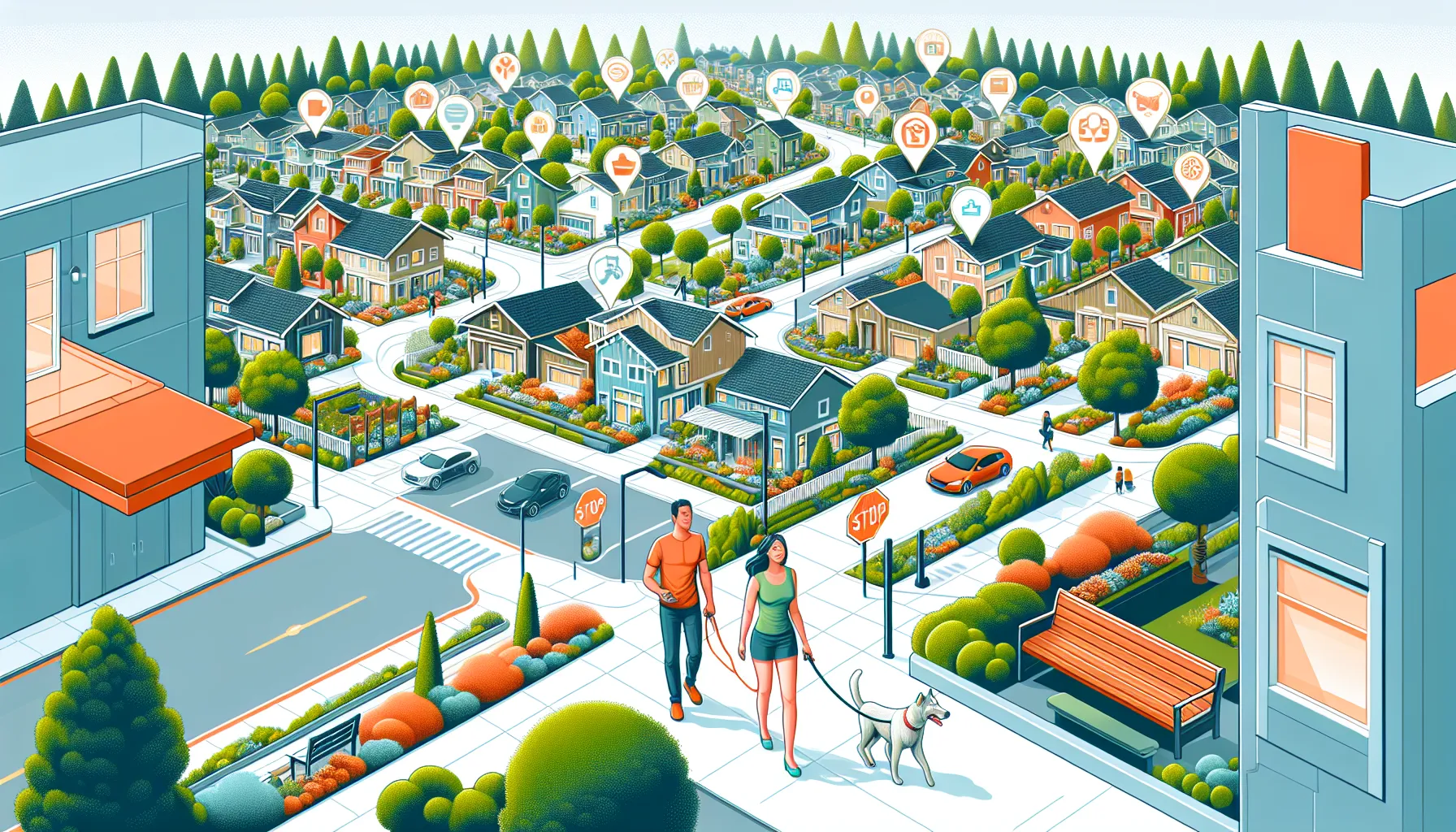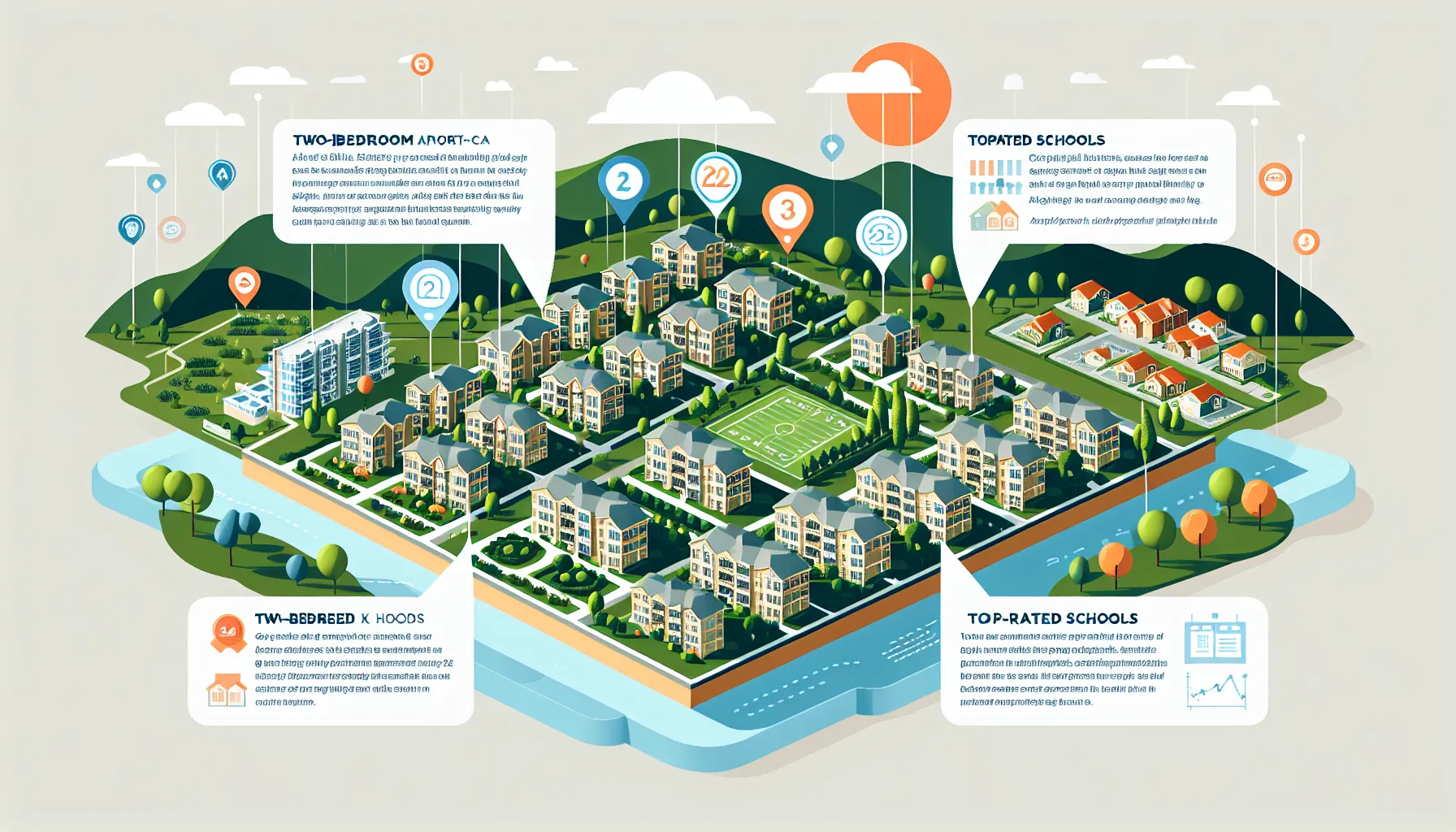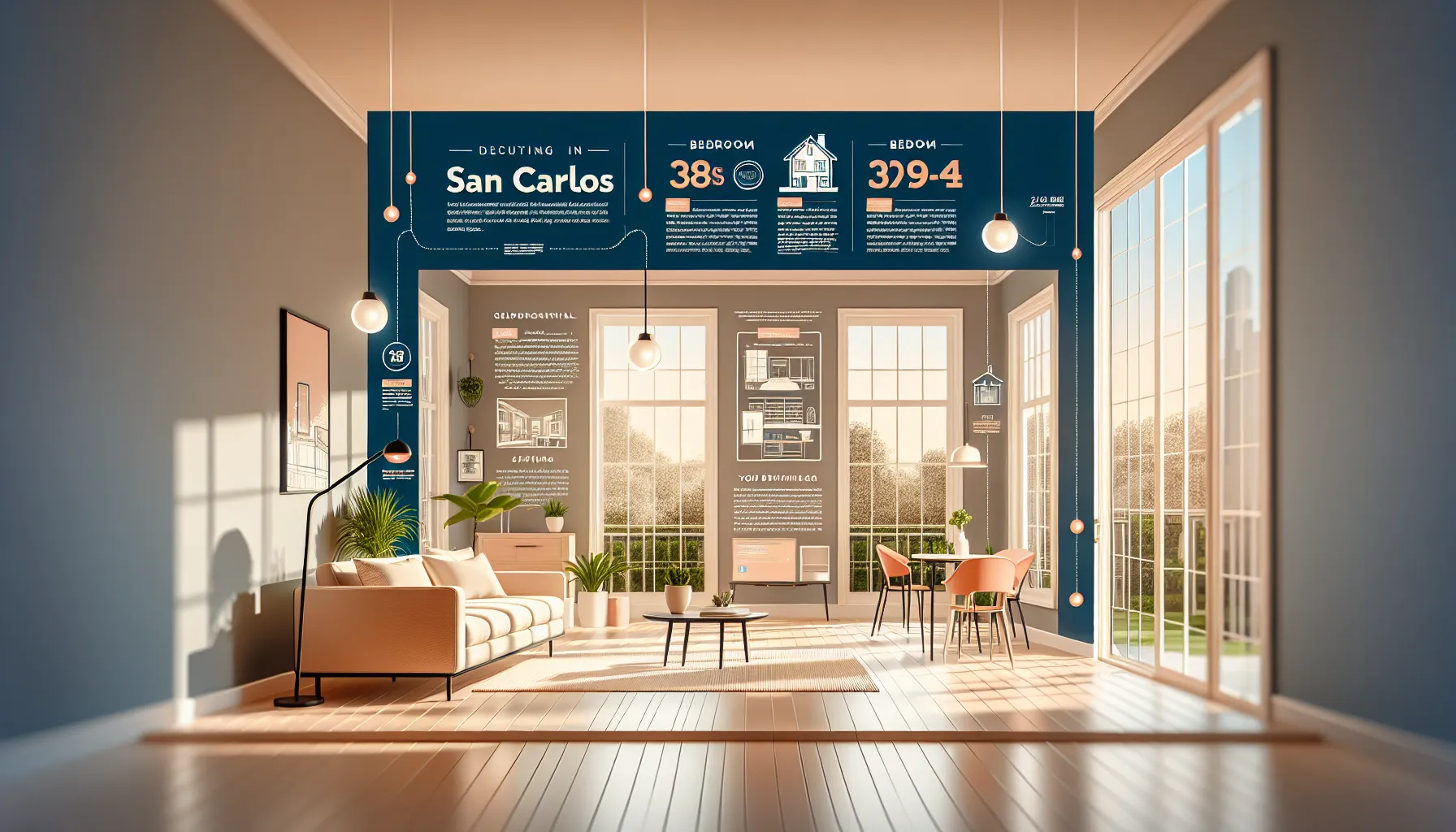Key Takeaways
- San Carlos remains a high-demand rental market, with two-bedroom apartments typically commanding $3,200–$4,000 per month and consistently low vacancy rates.
- Key drivers of property income include location, neighborhood amenities, property type, and proactive management of maintenance and tenant relations.
- Comparing property income with nearby cities reveals that San Carlos offers higher returns but also comes with greater expenses, such as property taxes and upkeep costs.
- Effective strategies to maximize rental income include regular rent reviews, thorough tenant screening, timely property maintenance, and targeted marketing.
- Staying informed about local market trends and regulations is essential for sustaining strong returns and making informed investment decisions in San Carlos.
- Reviewing and optimizing your property management practices annually can help identify new opportunities for growth and increased income.
Thinking about your property income in San Carlos can stir up a lot of questions. Am I getting the best return? Is my investment working as hard as it could? I know how important it is to feel confident about your rental property’s performance—especially when you’re juggling other responsibilities or living outside the area.
San Carlos has attracted both homeowners and investors who want their real estate to thrive without constant stress. Many people want a hands-off experience, but still care deeply about results. Have you ever wondered if your property could generate more income or if there are ways to make management easier? You’re not alone. Let’s take a closer look at what you can expect from property income in San Carlos and how to make informed decisions that support your financial goals.
Understanding Property Income in San Carlos
Property income in San Carlos brings both opportunities and questions for local owners. I see that many investors and homeowners want steady returns and worry about issues like vacancies, rising costs or market shifts. Are you wondering how your rental stands in this market or what the numbers could look like next year?
Rental properties in San Carlos generally command higher rents compared to other California cities. A two-bedroom apartment typically earns between $3,200 and $4,000 monthly, with single-family homes fetching even more. The area attracts steady demand from professionals and families, helping me keep vacancies low and income stable. Have you compared your property’s rent to current averages lately?
Keeping track of expenses matters just as much as maximizing rent. Typical costs can include maintenance, insurance, and local taxes. Owners often ask about ways to protect their income and reduce surprises. How do you track your monthly and yearly outlays to get a true picture of your investment’s returns?
Long-term success depends on smart decisions about pricing and upkeep. I aim to keep my property well-maintained and responsive to tenants’ needs. Simple steps like regular inspections and quick fixes help me keep rental income flowing and protect property value. What strategies have you used to reduce costly issues or improve tenant satisfaction?
Property income in San Carlos reflects the area’s strong economy and high demand for rentals. Reviewing the property’s earnings each year helps me spot trends and decide if changes are needed. If you want to reach your financial goals and enjoy peace of mind, what questions would help you better understand your current income?
Key Factors Affecting Property Income

Property income in San Carlos changes for many reasons. Do you ever wonder why one rental property outperforms another? Let’s explore what makes a real difference.
Location and Neighborhood Trends
Location shapes rental income most. Areas close to transit, parks, or top-rated schools attract steady demand. Neighborhoods with low crime rates and better amenities often see higher rents. I find that changes such as new businesses or upgrades to public spaces affect values quickly. What changes have you noticed in your neighborhood lately?
Property Types and Demand
Property income rises and falls based on the kind of home. Single-family houses, condos, and apartments each face different demands. In San Carlos, two-bedroom apartments often fetch $3,200 to $4,000 a month. Single-family homes sometimes command even more. Rental preference shifts can come from job growth or lifestyle trends. Which type of property do you think fits your goals best?
Rental Market Dynamics
Rental market changes influence income across seasons. Vacancy rates and rental supply shape your earning power. For example, a high demand with scarce inventory tends to increase rents. I keep a close eye on local data and price properties based on recent trends. Have you seen fluctuations in rent in your area this year? Tracking these shifts helps spot opportunities to secure stronger rental returns.
Reviewing Investment Opportunities in San Carlos

Strong investment opportunities exist throughout San Carlos. I’ve seen the city attract renters who value its location, excellent schools, and vibrant neighborhoods. Are you weighing different rental strategies to match your goals? Reviewing the options available can help you feel more confident about your next steps.
Short-Term vs Long-Term Rentals
Deciding between short-term and long-term rentals involves different considerations. Short-term rentals—like those for travel nurses or tech consultants—sometimes produce higher monthly income. For example, some owners in San Carlos receive up to 20% more during busy months. Still, this option often brings more vacancy risk and requires extra time to coordinate bookings and cleaning.
Long-term rentals, which typically last a year or more, provide greater consistency for owners seeking peace of mind. I notice less turnover, fewer gaps in income, and tenants often look after properties more carefully. If what matters to you is steady earnings and less frequent tenant searches, long-term leases often align better with those priorities. Which rental style do you find matches your expectations for involvement and risk?
Expected Returns and Risks
Rental properties in San Carlos offer promising income potential. Two-bedroom apartments often bring $3,200–$4,000 per month. Active investors keep close watch on costs, since expenses like maintenance and insurance can rise quickly, reducing net returns.
Market trends sometimes lead to short-term dips, such as vacancy increases or seasonal slowdowns. Average vacancy rates fluctuate but usually stay low compared to other Bay Area cities. With the right strategy and close attention to property upkeep, many owners see returns above 5% annually in stable years.
How comfortable are you balancing returns with risk? Reviewing past earnings and staying alert to local economic shifts can reveal new possibilities. Let’s discuss what financial outcomes you’d like to reach in the coming years.
Comparison With Nearby Areas

Rental income trends in San Carlos stand out when I look at nearby East Bay cities like Fremont, Hayward, and Pleasanton. In San Carlos, two-bedroom apartments average between $3,200 and $4,000 each month. In Fremont, apartments with similar features usually generate $2,700 to $3,400 monthly. In Pleasanton, two-bedrooms tend to reach $2,900 to $3,600. Hayward rents fall lower, often between $2,300 and $2,800 for comparable units.
| City | 2-Bed Apartment Rent (USD/Month) |
|---|---|
| San Carlos | $3,200 – $4,000 |
| Fremont | $2,700 – $3,400 |
| Pleasanton | $2,900 – $3,600 |
| Hayward | $2,300 – $2,800 |
Neighborhood features play a major part in these differences. For instance, proximity to top-rated schools and easy access to commuter transit help San Carlos attract higher-paying tenants. Cities like Antioch and Brentwood, though offering lower rents—often $2,000 to $2,500 for similar units—appeal to those seeking affordable options with more space.
Vacancy rates follow a similar pattern. San Carlos typically sees lower vacancies compared to Antioch or Hayward, where tenant turnover is more frequent due to shifting job markets. This stability offers peace of mind to investors.
Property owners in San Carlos experience higher returns, but I notice this comes with higher property taxes and maintenance expenses. Do you find yourself wondering how your rental return stacks up against properties in nearby markets? Are you curious which factors drive the differences you see on your statements? Comparing income and costs across local cities brings valuable perspective when setting goals for your investments.
Have you considered how local schools, walkable areas, or business growth shape demand for rentals in your neighborhood? Comparing your current property income with trends in neighboring cities may help you identify opportunities for improvement.
Tips for Maximizing Property Income in San Carlos

Reviewing my rental rates at least once a year helps me stay in line with San Carlos market trends. I look at nearby listings and adjust my prices to match demand, especially for two-bedroom apartments priced between $3,200 and $4,000. Have you checked how your rents compare with similar properties nearby?
Screening tenants carefully lets me maintain a consistent income stream. I focus on those with strong credit and rental history to reduce vacancy and late payment risk. How do you find tenants that are the right fit for your property?
Regular maintenance preserves my property’s value and makes it more appealing to renters. I address small repairs quickly to prevent bigger costs later. Properties in good condition not only attract higher rents but also reduce downtime between tenants. What steps do you take to keep your place in top shape?
Investing in upgrades like new appliances or fresh paint often leads to higher rent and more interest from renters. Simple improvements pay off, especially in neighborhoods near top-rated schools or transit hubs. Even adding in-demand amenities, such as in-unit laundry, can boost income potential.
Keeping a close eye on expenses helps me protect my bottom line. I track maintenance, insurance, marketing, and management fees like leasing fees ($199 per lease), monthly management (7% of rents), and set-up charges ($100) to stay profitable. Are you watching your year-over-year expenses and returns?
Marketing my property using multiple platforms, including online listings and targeted ads, increases exposure and faster lease-up. Highlighting what makes the property stand out, such as proximity to parks and schools, draws more interest.
Staying informed about local regulations and market shifts supports better decisions. I follow the latest trends on rental demand, pricing, and required compliance to avoid surprises.
Being proactive with lease renewals reduces gaps in occupancy and stabilizes my income. I start renewal offers well before leases end, offering incentives to reliable tenants.
Would reviewing your approach help you find new ways to grow your property income in San Carlos?
Conclusion
Owning rental property in San Carlos offers unique opportunities and challenges. I know it’s important to stay proactive and informed to make the most of your investment. By keeping an eye on market trends and fine-tuning your strategies you can boost your rental income and keep your property competitive.
I encourage you to regularly review your approach and stay open to new ideas. With the right mindset and a commitment to improvement you’ll be well-positioned to achieve your financial goals and enjoy a smoother property management experience.
Frequently Asked Questions
What makes San Carlos a good place for rental property investment?
San Carlos is highly attractive to renters due to its prime location, excellent schools, and vibrant neighborhoods. High rental demand, strong local amenities, and relatively low vacancy rates contribute to stable and profitable investments for property owners.
How much can I expect to earn from a two-bedroom apartment in San Carlos?
Two-bedroom apartments in San Carlos generally rent for $3,200 to $4,000 per month, depending on factors like neighborhood, proximity to schools, and property condition.
How do San Carlos rents compare to nearby cities?
San Carlos rents are higher than in many nearby East Bay cities. For two-bedroom apartments, rents average $3,200–$4,000, while similar units in Fremont, Pleasanton, and Hayward typically range from $2,300 to $3,600 per month.
What are common challenges for San Carlos property owners?
Owners often face concerns about vacancy, rising costs, changing market conditions, and keeping up with maintenance, insurance, and property taxes—all of which can affect rental income.
How can I maximize rental income from my San Carlos property?
Review rental rates yearly, upgrade property features, screen tenants carefully, stay consistent with maintenance, and keep expenses in check. Proactive marketing and staying informed about local trends also help maximize returns.
Should I choose short-term or long-term rentals in San Carlos?
Short-term rentals may provide higher monthly income but often come with more vacancies and management responsibilities. Long-term rentals offer stability and more predictable income, which many owners find less stressful.
What factors most affect San Carlos property income?
Key factors include location, neighborhood amenities, local school quality, transit access, property type, and ongoing market trends. Staying updated on these can help you make better investment decisions.
How often should I review my property’s financial performance?
It’s best to review your property’s earnings, expenses, and rental rates at least once a year. Regular reviews help identify trends, address issues promptly, and keep your investment aligned with your financial goals.
What tips can help reduce vacancy in San Carlos rental properties?
Screen tenants thoroughly, keep your property in top condition, offer competitive rental rates, and be prompt with lease renewals. Good marketing and responsive communication also help attract and retain quality tenants.
Is investing in upgrades worth it for San Carlos rentals?
Yes, thoughtful upgrades—like modern appliances, fresh paint, and added amenities—can justify higher rent and attract better tenants, which increases your property’s income potential and long-term value.
